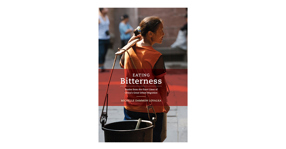We’re pleased to provide you with insights like these from Boston Private. Boston Private is now an SVB company. Together we’re well positioned to offer you the service, understanding, guidance and solutions to help you discover opportunities and build wealth – now and in the future.
Stocking up on essentials and organizing vital information can help you weather shutdowns and disasters.
Thinking about how to prepare for a disaster can be a frightening prospect, but doing so gives you greater control over the unknown. In the face of a natural disaster or pandemic, or even sudden illness, you can think more clearly if you have a plan in place to protect yourself and your loved ones.
Emergency prep covers a number of areas, including your finances. The following eight steps will help you feel more confident in the face of an emergency and will highlight why having a non-financial emergency prep is just as crucial as an emergency fund.
1. Stock up on extra food and water
The Centers for Disease Control and Prevention (CDC) advises having at least three days' worth of non-perishable food and water in case of natural disasters, power outages or other disruptions to daily life. Ideally, you'll have enough for two weeks, but start by building a three-day minimum. Consider stocking bottled water, canned vegetables and other long-lasting foods in a cool, dry area. The CDC also recommends keeping utensils, can openers and aluminum foil on hand, along with a camping stove to cook on, if needed.
If you have young children or pets, make sure you have enough formula, pet food and other supplies to see them through the initial emergency as well. Keep in mind family members' dietary restrictions, too, as they may need a different list of non-perishables than you.
2. Refill any necessary prescriptions
If you or your family members take medication on a daily basis or rely on emergency inhalers, it's a good idea to have a two-week to 30-day supply on hand. If you can't get to the pharmacy, be sure that your medical needs are taken care of until you can see a doctor or make it to the store again.
3. Build a disaster supply kit
In addition to food, water and medicine, the Red Cross recommends preparing a disaster supply kit with a flashlight and battery-powered or hand-crank radio (plus extra batteries). The organization also advises keeping toiletries, along with a first aid kit for the entire family, on hand. Other recommendations include games and activities for children, multi-purpose tools, a manual can opener and extra sets of keys for your house and car.
4. Test smoke and carbon monoxide detectors regularly
The Red Cross reports that seven people die in home fires every day, and fires are responsible for $7 billion in property damage each year. Another risk is carbon monoxide, which kills 400 people and sends 24,000 to the hospital in the U.S. annually. Test your smoke alarms and carbon monoxide detectors at least once a month — set a calendar reminder so that you get in the habit of doing it regularly. Replace the batteries immediately if the devices aren't working, and have a fire escape plan that you can review regularly with your family.
5. Pack an emergency go-bag
Disasters can happen in the home as well as in your broader community. A pipe burst, a fire in the kitchen, water damage in the ceiling — any of these situations can necessitate a quick evacuation. It's wise to have an emergency go-bag easily accessible. Keep it stocked with a change of clothes for everyone in the family, extra medications and copies of essential documents and account information. You may also want to keep an emergency credit card in the bag in case it's unsafe to grab your wallet or handbag before you leave the house.
6. Organize your medical documents
Illness and injury often strike quickly, and when they do, you want to have key medical documents readily accessible for emergency workers and your family. Compile a folder with your health insurance information, the names of your doctors and how to contact them, as well as any living will, power of attorney and HIPAA documents. You should also include a list of any medical conditions you currently have or have had in the past, along with the medications and supplements you're taking. Document this information for every member of your family.
7. Make copies of personal and financial information
The Red Cross suggests keeping copies of documents such as birth certificates and the deed to your home in your disaster kit, along with copies of your medical information and your insurance policies. You may want to invest in a fire-safe lockbox to keep the originals safe, but it's a good idea to keep copies as well. If you can't get to the lockbox before evacuating, you may need account numbers and copies of your IDs to access your money or receive medical treatment.
8. Keep cash on hand
You may also want to keep some cash in the house in case of emergencies. How much depends on your needs and comfort level. Try to keep enough to cover essential expenses if banks are shut down for a few days. Your cash on hand is different from a long-term emergency fund. The cash on hand should just be enough to see you through the initial impact of a shutdown or natural disaster to ensure that you can access food, fuel and shelter until banks reopen.
If you learn how to prepare for a disaster now, you'll thank yourself later. It takes time to build up your pantry and disaster supply kit, as well as compile all your essential documents. But having those things in place will enable you to focus on what matters most — your loved ones — if and when disaster strikes.














